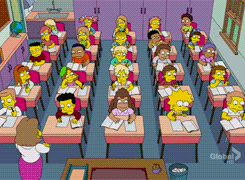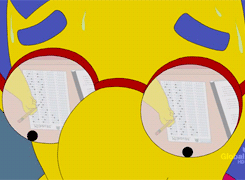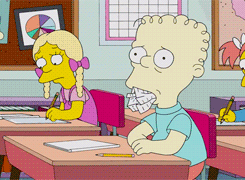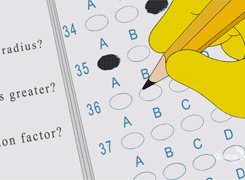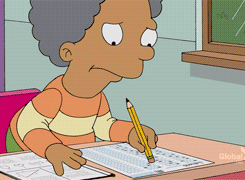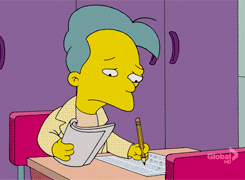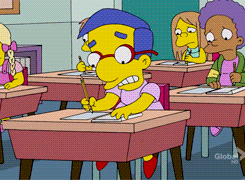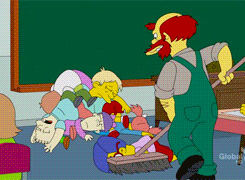My fortune teller told me I write and draw better than I speak and that I should express myself more, so here I am.
Don't wanna be here? Send us removal request.
Photo

225K notes
·
View notes
Text
On the death of small things.
Remember the first time your pet died?
Mine was a hamster. His name was Ramen, a grey fluffball no larger than a tangerine whose hobbies included running on his wheel at midnight and nibbling on my shirt. I’d gotten him as a birthday gift from a friend, and as soon as I took him home in his teensy kingdom of a cage, my siblings were in love. Ramen became the first thing they checked up on returning from school and the last before they went to bed. I remember their squeals as I plopped the mouse into their palms, their giggles at the ball of fur wriggling about inside their cupped hands.
That fateful day came barely two weeks after he joined our family.
“Vicky, the hamster’s not moving!” Daisy hollered from the living room.
“Just leave him be! He’s probably sleeping!” I hollered back.
“I don’t think he’s sleeping! You should come take a look!”
I was sure she was over-reacting. Even by the time I went outside, opened his cage and softly touched him, I still didn’t believe her.
“He’s still warm, Daisy. Maybe just really tired.”
But then I prodded him again. No movement. That’s strange… normally he’d wriggle. Slightly alarmed, I scooped him up onto my palm. Again, no movement.
The next minute was probably the scariest experience in my life. Okay, no it was the second scariest, after thinking my parents were going to get divorced in 2nd grade (they did not). When I first picked up Ramen, he was still soft, squidgy and warm. But with every passing moment, the warmth faded from his body and he stiffened up, until the animal in my hand was no longer “just normal Ramen” but a stone cold, rock hard block. What the f*ck. Barely 30 seconds ago, he seemed so real—I could literally imagine him scrambling around the room—yet now he felt no different from a stuffed animal. Yet even stuffed animals were soft and designed to have a life-like quality about them; Ramen was as stiff and lifeless as a hairy lump of coal, almost as though he’d never been alive at all and my memories of him were just imagination.
I don’t know if you’ve ever held onto someone or something as its last bits of life were fading away, but honest to God is it terrifying. Heart-about-to-jump-out-of-chest terrifying. In that moment, when you them transform from what you know them to be into something completely different—a bad different—your mind starts replaying random highlights of your memories of them at 10.X speed, but there’s also a voice screaming “That’s not them you’re looking at! It’s not them!” inside your head. Whatever you’re looking at suddenly becomes so ghastly and stale you don’t want to believe that it’s them, that you loved so dearly. You don’t want your wonderful memories of them to be tainted and topped with this horrendous image of a lifeless, wax-like imposter. You want to cry. Maybe you do. You find it hard to breathe, but you kind of have to anyway. The rational part of you knows it’s really still them, and so you’re heartbroken and about to crumble, but the other parts are in denial, and it feels like your brain is exploding. You’re scared, but feel bad because you know you shouldn’t be scared. The rational part of you screams to size up, to be present. There’s also a smaller, but much louder part, screaming that it doesn’t understand, it doesn’t like what’s happening and it wants to disappear.
You agree. You want to disappear and wish you’d never seen this happen.
But you did see it happen. Eventually you get over your fear, complete your responsibilities and move to the next stage: grieving. You deny, you cry, you scream. Finally you accept.
Ramen got a proper burial under a big tree in my front yard, and I still mention him in my prayers. He rests there, maybe watching over the people passing by, or maybe just lying still. Who knows. I was mortified for two weeks, but after that life went on.
Life always goes on, after the death of a pet, a loved one, a natural disaster, or economic downturn. Maybe it could not go on if a meteor crashed and wiped us out like dinosaurs. Or maybe COVID-19 will wipe us out like dinosaurs. I know life will go on, but I’m still terrified of seeing it fade away from people, or things. I will never forget what it felt like to hold Ramen, but it makes me wonder how it will feel when it isn’t just a hamster that dies, but a real person. Not just any old person, but someone close to me—a friend, or a family member. What would it be like to watch the life drain away from them? Is “drain away” really the right verb? If it drains, then where does it go after that? Is it transferred to others, or lost forever?
I realise that I may have been taking life, and the warmth it brings with it, for granted all this time. We’re so used to people and animals being present with us, that we can hardly imagine what it’s like to lose them. Watching death happen, I also realise how incredibly fragile all us living organisms are, how we can transform into nothingness and neverness, and how all proof of us existing can disappear in the blink of an eye! Perhaps that’s why it’s so important that we write and draw and tell stories: to remember and celebrate the lives of organisms, no matter how small, that walked the earth. I decided to write this in memory of Ramen, for this will be the only documentation and proof of his existence as my old phone which held his photos (there were not many) has died and his belongings cleared.
May he rest in peace and may the positive energy he brought in his life be passed onto others, never lost.
7 notes
·
View notes
Text
I took a Harvard course on dealing with pandemics. Here’s what I learned about the Corona Virus.
A couple of weeks ago, I enrolled in an online course named “Lessons from Ebola: Preventing the Next Pandemic” from Harvard University in hope of gaining a more educated standpoint on how to deal with the current COVID-19 situation.
In this post, I’ll combine what I’ve learned in the course with my own research and observations into lessons applicable to COVID-19 in 5 sections: 1) A comparison of COVID-19 to Ebola, the most recent pandemic; 2) Trust and Community Engagement as essential elements for success in the fight against pandemics; 3) What you can do as an individual to fight COVID-19; 4) What nations can do to fight COVID-19 and 5) Helpful Resources. Feel free to read all or skip to the sections that interest you the most.
1. “Not enough people die from Corona for it to be dangerous! Ebola’s death rate was way higher!”
Opening up the long post, let’s talk about how COVID-19 has been continually compared to past epidemics and how these comparisons seem to make sense, but really don’t. With the overall mortality rate of COVID-19 at only 4% compared to the double digits of its predecessors, many people—like the young man below—are skeptical of whether it’s really that dangerous at all.

The tweet then follows with a specific comparison of COVID-19′s then 3.4% mortality rate to the 2014 outbreak of Ebola’s 50% mortality rate in attempt to downplay COVID-19′s dangers and justify OP’s “you only live once” mentality.

Looking at this gap, COVID-19′s dangers couldn’t possibly compare to past outbreaks, right? Well... not quite. While the statistics are correct, the way they’re used here completely disregards other important factors regarding the context of how these diseases are spread, making it hard to compare whether one is “more dangerous” than the other at all.
If you really want to compare, you need a holistic comparison of the contexts, resources available, responses and much more. I’ll give a few examples below to show how the two epidemics are different:
A. International and Local Response
In case of the 2014 Ebola epidemic, WHO took extremely long to declare the situation an international emergency. The first Ebola cases hit in December 2013, but only 8 months later did WHO announce “emergency” status. By then, with no funds/aid to buy medical equipment and no volunteer health workers mobilized to aid the severe lack of doctors on site, the damage done was already too great. More than half of the 2500 patients had already lost their lives. With no resources and no international help in those entire 8 months, local governments struggled immensely, resulting in responses so weak that many citizens lost faith in the system. This meant there was no unanimous cooperation to fight Ebola in the beginning.
With COVID-19, WHO’s pandemic warning came much faster: less than 4 months after the first case in November 2019. This means that countries will have more time to prepare themselves in advance before the virus reaches its peak in their own lands, and that funding/aid can be efficiently funneled to places currently that need them the most. In China, where COVID-19 first appeared, the government were incredibly robust in responding to the crisis, immediately locking down the region, mobilizing resources and educating their people. Unlike the West Africans with Ebola, the Chinese had trusted their governments and been highly involved in the fight against corona since the beginning. It only took China 2 months to shut down schools, whereas it took the West Africas 6-7 months. For the Ebola epidemic, these delays dealt a fatal blow to their already sky-high number of casualties.
B. Resources Available in Countries of Breakout
In Sierra Leone, Guinea and Liberia where most cases of Ebola broke out, there were severe shortages human resources, medical equipment and training on how to handle the disease. Already tiny, under-equipped clinics couldn’t handle the influx of patients. Sierra Lione had roughly 51 physicians for 5 million people, that’s a 1:98,000 physician to citizen ratio, and protective equipment was so lacking that people initially had to use plastic bags in place of gloves. Without personal protective equipment, many health workers ended up dying from the disease, leaving less people to care for increasing cases. Countries like America also discouraged volunteering, firing everyone who wanted to help in Africa for fear of them bringing back Ebola, driving down the number of outside helpers even more.
While there were definitely shortages in Wuhan, the first epicenter of COVID-19, China definitely had better resources and medical facilities available for its citizens. Following the outbreak, 23 000 doctors and nurses were mobilized to Hubei Province (Wuhan is the capital of Hubei), that’s a ratio of around 1:2,500 physicians to citizens. Still a crazy stretch, of course (even assuming that not every citizen will fall sick), but already way, way better than the ratio in Ebola hotspots. China is also much richer than the West Africas, and besides the money the Chinese Government was pouring into the COVID-19 fight, many wealthy Chinese businessmen and celebrities donated millions of dollars worth of medical equipment, masks and money to fund research and treatments.
China had far better capabilities to deal with COVID-19 than the West Africas had with Ebola. Perhaps you could consider Ebola’s high death rate a reflection of the struggling African response, and COVID-19′s lower one a reflection of the more prepared Chinese one. It’s NOT, however, a direct reflection of which diseases is more dangerous on its own and by how much. If COVID-19 had broken out in a country with the same resources as West Africa, the death toll would undoubtedly be much higher.
But that was at the beginning of the outbreak. Now, the situation around the world isn’t looking too great. COVID-19 in over 190 countries, many whose medical systems are sorely under-prepared to handle the virus, placing nations at risk of healthcare collapse. As medical supplies, human resources and hospital beds run out, more people will unquestionably die. The mortality rate has already risen from 2% to 4% since I started writing this article.
C. Infectiousness and Scale of Disease
Miraculously as it seems, Ebola mostly stayed within the African nations with only 14 cases outside (USA-11, Italy-1, Spain-1, UK-1). This was because Guinea, Sierra Leone and Libera (regions most affected) were already fairly isolated nations, and being right next to the sea prevented the virus from spreading in that direction. Local governments set-up strict border control, and international airlines/private companies basically stopped flying to Africa so few people could carry the virus outside affected areas.
While Ebola spreads through direct contact, COVID-19 is spread through droplets that can cling to hard surfaces, making it much more infectious. Despite Hubei’s lockdown, the virus managed to spread to over 190 countries across the world where cases will only continue to rocket unless governments act fast. Just for comparison, yes Ebola killed 50% of cases, but its scope was much smaller with 28,637 cases in contrast to Corona’s 430,000 cases (and counting). COVID-19’s scope is wider than not just Ebola, but also 2003′s SARS (26 countries, 8098 cases) and 2012′s MERS (27 countries, 2494 cases) which it is often compared to. An outbreak of this scale hasn’t been present since the Spanish Flu in 1918 (which affected over 500 million people).
Now how does that translate in terms of danger? Well, with outbreaks focused in few regions like Ebola, it’s much easier to coordinate support from international organizations (MSF, WHO...) and other nations. People know exactly where they should be sending resources and supplies, and where to direct help. But when all 195 countries are infected with the virus, it’s impossible for WHO to help all nations that need it because there just aren’t enough resources! When everyone’s struggling to contain their own cases, helping other countries just isn’t a priority anymore. The world can come together to help 3 countries, maybe even 30, but all 195? That’s a completely different story.
Mini conclusion: Don’t be fooled by COVID-19′s seemingly low mortality rate into thinking it isn’t dangerous. COVID-19 is of larger scale than all recent pandemics, including Ebola, and threatens to bring a bigger danger: the collapse of healthcare systems worldwide. Governments can lower cases and deaths by taking strict preventative measures and ensuring enough resources/supplies are always available at hand.
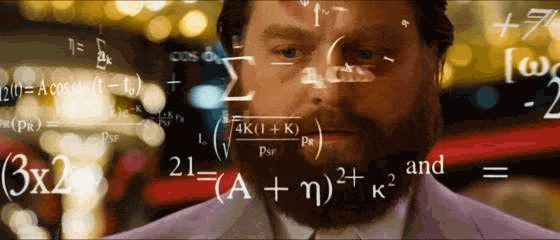
2. Community Engagement + Trust = Success (well that’s the gist of it, anyway)
A. Community Engagement vs. Individual Satisfaction
In countries like China, Vietnam, South Korea, and recently Italy, governments have taken strict measures to control the virus, including but not limited to cancelling schools and events, issuing detailed quarantine/treatment protocols and educating people of the disease nationwide. Citizens have banded together and are closely cooperating with their government to overcome the epidemic. The Vietnamese Prime Minister has even called the effort “Chống Dịch Như Chống Giặc” which roughly translates to “Fighting the virus like fighting against invaders/enemies.” This is not an exaggeration. With every single person and community fully engaged and playing their part to stop COVID-19, it really does feel like we’re “going to battle.”
Countries with the highest levels of community engagement and strongest government responses have proven to be most successful in dealing with pandemics time and again. They don’t even need the most money or best medical equipment, just complete trust in their government’s efforts and the mindset of everyone doing their part for the greater good.
Interestingly enough, many countries successfully containing COVID-19 are Asian despite being closer to the initial outbreak, which might reflect the emphasis on “community” in Asian cultures, while Western nations that prioritize “individuality” generally end up doing worse. For example, at one time Italy and South Korea both had around 7000 cases, but Italy’s death toll was 366 while South Korea’s was 50. Koreans had shut down schools and public events, issued tens of thousands of tests, and were all self-quarantining. Italy had seen thousands of cases the week before, yet citizens at that time showed little concern and still gathered en-mass, allowing the virus to spread more quickly. This was right before the Italian Government announced COVID-19 as a national emergency and locked down the entire country—only then did people start taking it seriously.
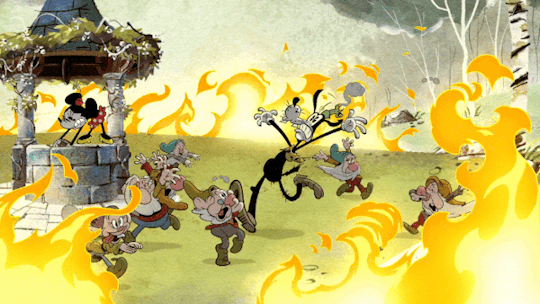
Notice how both situations dealt with viral spreads, but Koreans’ strict abidance to community guidelines early on helped lower the number of fatalities drastically, and now Korea is reporting fewer and fewer new cases every day while Italy’s numbers are still increasing exponentially. Likewise, in America where governments ignored WHO’s emergency warning and failed to take precautionary measures against COVID-19, numbers are soaring with over 30,000 cases accumulating in 3 weeks. Countries where people choose to indulge in short-term individual satisfaction end up facing far worse consequences than countries which choose to sacrifice some personal liberties early on for the greater good.
B. The Problem of Trust
So now let’s talk about trust, another crucial factor in dealing with pandemics. When Ebola hit the West Africas in 2014, one of the biggest hurdles hindering recovery early on was the complete lack of trust between citizens, the government and even international helpers. When physicians from abroad first showed up, they were shunned—locals didn’t trust these strangers in plastic suits and goggles, speaking tongues different from their own. Locals didn’t trust that the healthcare system could actually cure them, and in many districts people stopped going to clinics entirely for fear of contracting Ebola. Imagine the complications that arose because of that lack of trust! People refusing to visit clinics meant more severe infections, more deaths, more transmissions, and lack of cooperation with government efforts.
The early days of Ebola were a medical disaster. It was only when the government solidified trust with citizens by training community health workers and educating nationwide about the disease that things started looking up. Likewise, to successfully control and overcome COVID-19, governments and their citizens must trust each other wholeheartedly and closely cooperate to push back dangers.
“Learn to trust the government if they're taking action. It’s not because they're more intelligent or more prepared than you, certainly, but they are the only people with access to all of the available information. Knowledge is power, now more than ever. We are able to evaluate and predict the effect of the measures, so there's a reason they've been taken.” — Angelo Sidonio.
Right now, trust is a big problem. People all over the world are in panic because they don’t believe their governments are doing everything possible to keep them safe. And they’re rightfully concerned! As food banks and shelters close down due to lack of volunteers, over 320,000 homeless people in the UK, unable to self-isolate, face even greater dangers than before. In America, where almost 40 million people live in poverty and another 3 quarters live paycheck to paycheck, sky-high medical bills can either discourage citizens from seeking treatment, or push those who do into bankruptcy. And that’s assuming they even get treated, for although America is taking some measures like “social distancing” only a tiny number of cases are being dealt with. As of March 23rd, Spain and America both have around 30 000 cases, yet Spain has finished treating 4,400 cases while America has only treated 636 — that’s a difference of seven times!

Until governments can prove themselves trustworthy to their citizens, the efforts to contain COVID-19 will be long, arduous and without unanimous support. This means ensuring even the most vulnerable groups feel protected and assuring citizens that should they contract the virus, they will get quality treatment that won’t break the bank. Trust minimizes panic, boosts morale and creates unity, putting the country in a better position to defeat the pandemic.
Mini conclusion: To overcome pandemics 1) Citizens must trust that the government is doing everything possible to protect them (gov. should actually be doing this by the way!) and 2) Everyone must be fiercely involved in community engagement, playing their part to stop the disease spread. Personal sacrifices are sometimes necessary for the greater good. Trust minimizes panic, boosts morale and cooperation.

3. So what can YOU do about all this?
A lot of what I’ve just said points to systematic issues and government decisions that most of us can’t really change (unless you’re perhaps planning to become the next world leader, then yes, please go ahead and change them), so I’ll talk a bit about what we can do as students or individuals. There’s obviously all that stuff about washing your hands and self-quarantining which I won’t repeat—you can access WHO’s guidelines here and Vietnam’s guidelines here—but below are some other important things worth considering:
A. Raising Awareness and Educating Others
In many countries, there has still been no official nationwide efforts to educate the public on the risks of COVID-19, leading to many citizens either misunderstanding, trivializing or being ignorant of the topic. If you live in such an area, do your part by raising awareness on the following points, plus any more you can think of:
“Othering” and Exoticizing
COVID-19 brought about another disease: racism. Across the world, Asians are being shunned, discriminated against and seen as “carriers of the virus.” Many Chinese restaurants are losing customers, and some Asians are even getting beat up for wearing masks.
This is what you would call “othering”—somehow exoticizing COVID-19 as something intrinsically separate and different from oneself. “Oh that’s a Chinese disease that originated from exclusively Chinese practices of eating wild animals! It has nothing to do with me!” Saying this makes people feel “separated” from the risks because they don’t partake in these “distinctively Chinese” practices that lead to COVID-19. This is all false security, though. COVID-19 and its modes of transmission isn’t “distinctly Chinese” and consumption of wild animals is found across the globe (France, America...)
To exoticize human practices as “different” or “savage” is clearly racist and shouldn’t be condoned/ignored under any circumstances. However, do be careful as to how you go about responding to these people. If you’re aggressive, it will most likely backfire. If you can, try to remain calm and build understanding (most of these people are just ignorant, not inherently evil and incapable of love), as attacking them will only make them more defensive. More importantly, check on the victims of racism: let them know you support and stand by them.
“It’s only dangerous in ______! We’re safe here!”
But are you really? In a world as interconnected as ours, is there really such a thing as ‘only local’ anymore? Do you have family members or fellow citizens in epidemic hotspots? With millions of trains, cars and airplanes flying between cities, states and countries, do you really think there’s no chance that the virus will spread to where you currently live? At the start, we all thought COVID-19 could be contained in China, yet now it’s in 190 countries with rocketing numbers! There’s no such thing as completely safe, and many precautions are free and easy.
Trivializing: “It’s not even that dangerous! I’ll go to the pub if I want to! Plane tickets are on sale, so maybe I’ll go travelling too!”
Please don’t be irresponsible. You might not be at risk, but walking around and going to crowded places increases the chance of you picking up the virus and spreading it to others with who won’t survive! Perhaps you’ll end up passing it to your parents, grandparents, or someone with underlying health problems whose infection would be fatal. Perhaps you’ll pass it to someone without health insurance, who can’t pay for the cost of treatment. Remember that it won’t just be you suffering if anything bad happens, but those around you as well.
B. Educate Yourself: Study the Situation In Depth
Next! Other than teaching others the basic know-hows of COVID-19, it’s also important to educate yourself. And I don’t just mean knowing the basic symptoms and 6 steps of hand-washing. Most of us are self-quarantining with not much to do. Go deeper.
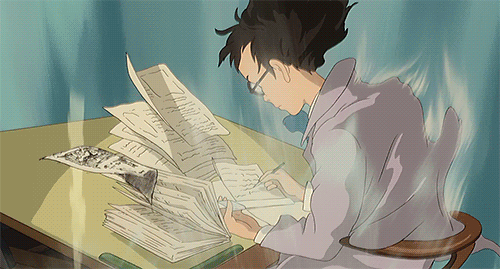
If you have the time, study how nations, NGOs and international organizations dealt with past pandemics, which methods succeeded or failed, and how they’re currently dealing with this epidemic. How is funding for research related to infectious diseases allocated and how can we improve the system for information sharing between scientists and nations? How and when does the WHO, World Bank, UNICEF and other UN Institutions allocate funding, humanitarian aid and expert help in a time when demand outweighs supply? What levels of involvement and accountability are to be expected at the level of individuals, communities, nations, and international organizations and how should they work together?
It’s a lot of knowledge, certainly, and you needn’t learn it all at once. But understanding the relationships between public health, economy and politics (even at a very basic level) will be tremendously helpful in making sense of why governments/organizations do what they do, and how our lives will be affected. At the end of this article I’ll list some resources I’ve found valuable for you to check out if you’re interested.
4. What Nations Can Do (Not an Expert Though So Maybe Don’t Quote Me On Your Essay)
Disclaimer: I’m not an expert on this so if someone actually does this and it ends up failing, don’t sue me. But alright, after taking the course on dealing with pandemics and observing how countries around the world are reacting, I’ve pieced together some basic steps that might work.
S. “TEST, TEST, TEST!”
In a press briefing on 16th March 2020, WHO Director General Tedros Adhanom Ghebreyesus announces “We have a simple message for all countries: test, test, test!” He emphasizes testing, isolation and contact-tracing as the backbone of the response, and urges nations to ramp up on these measures. That’s not to say that social distancing isn’t important—it is and we MUST continue to do it —but quarantining alone is not enough to extinguish the pandemic.
South Korea’s success in driving down it’s number of cases from exponential increase to few new cases per day is largely credited to its efficient testing. South Korea has issued over 380,000 tests since the COVID-19 outbreak in its country, and is testing some 20,000 people everyday. By testing suspects or those with mild symptoms, carriers are isolated and treated before they can spread it to others, well before their condition becomes fatal. With the recent donation of testing kits from WHO and other organizations, hopefully many more countries will also see the lowering numbers of this nation.
A. Nationwide Education on Pandemic
Next, to put out the epidemic, countries must provide ongoing, consistent and thorough education to the public about COVID-19 nationwide, regardless of whether they’re epicenters or not. No, a government official going on TV to say 5 sentences about the breakout is not enough. You cancelled classes? All your students should deeply understand why it’s so important that we don’t gather in crowds and spend that time isolating, not gathering at parties to ‘celebrate.’ Instead of the occasional “just wash your hands” reminder, comprehensive hygiene protocols should be put up noticeably everywhere and everyone should be able to repeat them.
Schools, hospitals, companies, communities and families must all have guidelines for dealing with the virus (appropriate to the level of severity in their area), and constantly be reminding their members of these duties. Every individual must deeply understand what they’re dealing with, what the risks are and how they can play their part in fighting the epidemic.
B. Standardized Procedures & Training
To educate, there needs to be standardized guidelines, procedures and protocols to educate with. Perhaps it would wise to train physicians around the country instead of just those at epicenters: that way when new cases arise away from the epicenter, local physicians can treat them right there instead of transporting them to hospitals in other cities, increasing chances of spreading the disease along the way (Vietnam is doing this.) Train community workers too, so they know how to handle local cases and can educate their communities--in an emergency like this, no community must be left ignorant.
For the general public, training on remote working is necessary too: many companies and schools are struggling with effective online meetings and communications. It’s only when everyone’s forced to work online that you realize many teachers don’t know what the heck they’re doing and everyone’s webcam/mike is off because they’re actually looking at memes instead of studying.
C. Strengthening Emergency Responses
Perhaps two months ago this section would be named “improve your healthcare system to prepare for the worst” but now that we’re in the middle of the outbreak, it’s impossible to fix everything as we go along. Instead, right now nations must strengthen their emergency response systems. This means being able to re-allocate funds and human resources to necessary areas, build/transform new treatment/quarantine wards and hospitals quickly, and ensure no shortages of medical (and general) supplies.
To meet demands in dire conditions, this requires governments to think outside outside the box and be resourceful, transforming their current assets (even if lacking) into something usable. In Singapore, this means using the army to pack masks and supplies for the population. In Vietnam, it meant clothing factories switching gears to mass-produce affordable, safe cloth masks to make up for shortages. It could mean governments hiring airlines and restaurants to make food for people in quarantine, transforming army camps or hotels into quarantine wards, quickly finding ways to train new personnel or creating an online health reporting system for their citizens. Whatever the case, an emergency like this one requires governments to step up their game and respond faster.
D. 10 Recommendations for Reform Before The Next Pandemic
To get more onto the academic side of things, after the Ebola outbreak of 2014, the Harvard-LSHTM Independent Panel on Ebola came out with this report, outlining 10 reform recommendations to help deal with future pandemics. I feel like a lot of it is still relevant today and should be adopted by nations to tackle the COVID-19 situation. I will quickly summarize the report in bullet points below because it’s super long, but check it out for yourself if you have time:
Prevention:
Nations must invest domestically in their core capacities (strengthening healthcare system, education programs...) The global community should provide poorer countries with funding and help to invest in these capacities.
WHO should promote early reporting of epidemics. There should be financial incentives for countries that report early to 1) Help deal with the outbreak and 2) Compensate for economic losses.
Response:
WHO should create a Center for Outbreak Response with strong technical capacity, generous budgets and clear accountability lines.
WHO should create a transparent, politically protected Committee with the power of declaring public health emergencies (right now only the Director General can declare public health emergencies).
An independent UN Accountability Commission should be created to assess worldwide responses to major disease outbreaks.
Research and Development (R&D):
Rules/guidelines on operating during/between outbreaks should be developed to oversee efficient research and ensure access to the benefits of research.
Research funders should establish a worldwide R&D financing facility for outbreak-relevant drugs, vaccines, diagnostics, and non-pharmaceutical supplies.
Governing global system on prevention and response:
Create a Global Health Commission in the United Nations Security Council (UNSC).
WHO should focus scale back expansive activities and focus on it’s core functions. In outbreaks, focus on 1) helping nations improve core capacities 2) rapid early response and assessment of outbreaks (including potential emergency declarations) 3) establishing technical norms, standards, and guidance and 4) convening global community to set goals, mobilize resources, and negotiate rules.
WHO needs to reform to be more effective. Member states should be vocal about choosing a strong, competent leader.
Again, these recommendations were made after WHO’s response to the Ebola outbreak of 2014. Although COVID-19 will bring about many new difficulties not yet covered in this report, it’s still a valuable guide for how we can prepare for the worst. WHO has since carried out multiple reforms, and despite the severity of the situation, are responding faster this time round to provide the world with information to tackle the crisis. Looking at successes to contain the disease around the world, we know what works. If all countries could apply those measures responsibly, we can pull through.
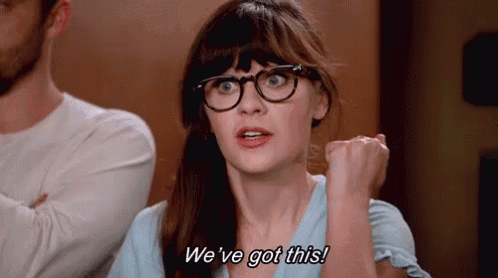
5. Helpful Resources
Lastly, I’d like to share some resources I’ve found tremendously helpful in understanding this COVID-19 ordeal. Check them out when you have time!
First, the “Lessons from Ebola: Preventing the Next Pandemic” online course from Harvard University that I mentioned at the beginning. The course runs for 1 month and is totally free! I got a lot of valuable insight from it on international responses to major infectious outbreaks. Although only Ebola is talked about in specific, a lot of it can apply to other diseases too, and I highly recommend it for basic understanding.
For general information:
Vietnam’s COVID-19 website from the Ministry of Health
World Health Organization (WHO) COVID-19 Updates and General Information
Worldometer (COVID-19 case tracker)
Interactive Map showing global COVID-19 spread - Johns Hopkins CCSE
Interactive Map showing global COVID-19 spread - WHO (out of the 3 trackers, Worldometer usually updates fastest)
This one Mark Manson article on Individual vs. Systematic risks and other risks and biases of COVID-19
New York Times has good articles for US coverage, CNBC for worldwide-ish coverage, but Western media has a bias against China, so check out South China Morning Post for coverage from the East.
Ghen Co Vy - A Bop to Wash Your Hands to
Scientific Journals/Sciencey sources to track research reports. While normally many journals charge fees, recently all information regarding COVID-19 has been changed to open-access:
The Lancet’s COVID-19 Resource Center
Cell Press COVID-19 Resource Center
Elsevier COVID-19 Information Center
The BMJ
WHO COVID-19 Global Research Database
That’s all I can think off right now! I’ve linked most of my sources in the article, and will provide additional updates to information when I can. For now I hope this article was useful and helped you learn something new about the COVID-19 pandemic, no matter now big or small.
Depending on the situation, our days of self-quarantine can last anywhere from a few weeks to months. In that time, remember to stay vigilant and take necessary precautions to protect yourself and your community, but also stay calm because panicking won’t help. Eat and drink healthily, stay clean and safe, learn things and look out for others. Let’s conquer this virus together!
All statistics are of 25th March 2020 and prior.
#virus corona vũ hán#coronavirus#covid-19#world health organization#education#social problems#socialdistancing#quarantine#sars cov 2#eng#science#healthcare
26 notes
·
View notes
Text
Mình chưa đụng vào đàn trong 8 năm nhưng mình vừa tự học lại và viết một bài hát cho sinh nhật bố // I haven’t touched the piano in 8 years, but I recently taught myself how to play and wrote a song for my Dad’s birthday.

7 notes
·
View notes
Text
Tom Stoppard in the latest Society of Authors journal, The Author.

2K notes
·
View notes
Text
Cẩm Nang Xin Lỗi
Bao nhiêu năm chúng ta đi học, ai cũng 12 năm mài đít trên ghế nhà trường, vậy nhưng những điều quan trọng nhất trong cuộc sống là xin lỗi và cảm ơn thì lại chẳng được dạy bài bản. Vì con người chúng ta sống phải kết nối với nhau, kỹ năng xin lỗi (tức là kỹ năng chăm sóc các mối quan hệ) quan trọng không kém kỹ năng viết luận hay tính toán doanh thu của công ty.
Thế nhưng tôi lại khá ngạc nhiên với số người lúng túng trong việc xin lỗi cho những truyện nghiêm trọng—những việc có thể gây tổn thương nặng và có khi còn chấm dứt mối quan hệ của bản thân và đối phương. Tôi viết bài này để chia sẻ kinh nghiệm của bản thân là một người đã đi xin lỗi rất nhiều, và cũng được xin lỗi rất nhiều. Nói cách khác: một veteran xin lỗi *facepalm*
I. Xin lỗi để làm gì?
Câu hỏi tưởng như đơn giản nhưng vẫn phải giải thích lại. Đương nhiên chúng ta xin lỗi vì có lỗi. Nhưng xin lỗi không phải là để “rửa tay” sau khi gây nên tội ác, cũng không phải để khép lại sự việc cũ để chuyển sáng việc mới. Chúng ta không xin lỗi vì đó là điều “mặc định” phải làm khi sai, hay chỉ để người kia hết tức và đối xử với ta như bình thường.
Chúng ta cần xin lỗi vì chúng ta trân trọng mối quan hệ với đối phương, và ý thức được rằng việc làm của mình đã làm họ tổn thượng. Chúng ta xin lỗi vì chúng ta mong muốn hàn gắn và duy trì mối quan hệ ấy. Đôi khi ta xin lỗi cũng không hoàn toàn vì ta sai—có thể cách hiểu của ta về vấn đề cũng có lý—nhưng vì hành động và cách nói chuyện của ta làm đối phương cảm thấy không được tôn trọng. Nếu không trân trọng mối quan hệ thì khi không xin lỗi và người kia không chơi với mình nữa, mình cũng chẳng quan tâm. Nhưng chính vì mình có quan tâm đến đối phương nên mới phải xin lỗi.
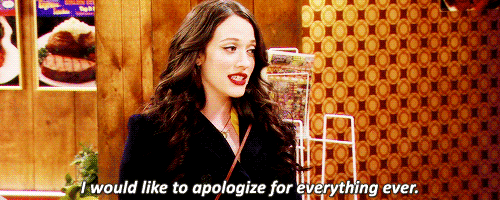
II. Những lời xin lỗi tốt và những lời xin lỗi dở tệ
Khi hiểu rằng chúng ta xin lỗi vì trân trọng người mình đã làm tổn thương và muốn duy trì mối quan hệ với họ, ta nhận thấy một lời xin lỗi tốt là lời xin lỗi làm nổi bật được điều đó. Cụ thể hơn, lời xin lỗi tốt gồm 3 điều:
Sự ý thức và hối hận về lỗi lầm của mình: đối phương phải cảm nhận được rõ ràng là bạn thấu hiểu việc mình làm là không đúng. Quan trọng là phải chân thành. Nhưng không có nghĩa chỉ nhận mình “sai” là đủ, phải biết sai ở đâu, cái sai đấy gọi là gì, vì sao lại sai. Chứ không phải “Mình sai rồi.” “Sai như nào.” “Ừ thì... sai thôi.”
Sự trân trọng đối phương, mong muốn tiếp tục duy trì mối quan hệ: nếu chỉ nói liền tù tì về bản thân mà không nhắc đến đối phương thì sẽ gây cảm giác là mình chỉ xin lỗi để bản thân mình cảm thấy bớt có tội (guilty), chứ không phải vì thật sự quan tâm đến cảm xúc của đối phương. Vì vậy, bạn phải nhấn mạnh được rằng mối quan hệ giữa hai người có ý nghĩa với bản thân như thế nào, răng bạn yêu quý và tôn trọng đối phương, và bạn không muốn mối quan hệ của hai người sẽ bị phá vỡ vì một lỗi lầm của bản thân. Người ấy phải cảm nhận được sự quan trọng của họ với bạn thì người ta mới sẵn sàng bỏ qua cho bạn.
Lời hứa không tái phạm, cùng với giải pháp (nếu có): xin lỗi mà chỉ nói xuông thì dù có sướt mướt, văn vẻ thế nào cũng chẳng để làm gì. Nhận lỗi và thể hiện quan tâm không đủ, người đó cần phải biết rằng bạn sẽ không lặp lại hành vi sai trái ấy nữa, hoặc ít nhất là cố hết sức để chuyện ấy không lặp lại. Nếu bạn có thể làm gì để giải quyết hậu quả, thì bạn cũng nói với đối phương những gì bạn sẵn sàng làm để họ thấy bạn đang nghiêm túc với việc sửa sai. Hãy trở thành người đáng tin cạy: nói làm là sẽ làm, nói không làm là sẽ không làm, nói thay đổi là sẽ thay đổi.
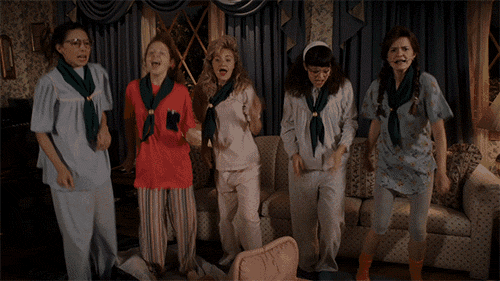
Áp dụng 3 điều này, mình sẽ xem xét vài cách “xin lỗi” chưa hợp lý và chỉ ra cách khắc phục:
TH1: Em gái của bạn đang sưu tầm vỏ chai và hộp giấy để xây một ngôi nhà đồ chơi. Bạn tưởng là rác nên đã vứt hết đi, khiến em khóc lóc, dỗi, không chịu ra khỏi phòng.
Rồi rồi...! Chị xin lỗi. Có mỗi mấy cái chai nhựa mà cũng làm um xùm hết cả lên. Em để bừa bộn như đống rác thế ai mà biết được?! Bàn thì như cái chuồng lợn, chị dọn cho còn không cảm ơn thì thôi...
Nghe kiểu xin lỗi đối phó, vênh váo như thế này có tức không? Khi đi xin lỗi người khác, tuyệt đối không được luồn thêm các lời trách móc, dạy đời vào—như vậy bạn sẽ biến nó thành một màn đổ lỗi, chối bỏ sự sai lệch của bản thân. Hơn nữa, những câu phán xét như “có mỗi mấy cái chai nhựa” cũng có thể gây xúc phạm, vì người kia sẽ cảm giác họ đang bị xem nhẹ và coi thường. Khi xin lỗi, hay luôn tôn trọng sự khác biệt của mọi người và nếu góp ý thì chọn từ ngữ nhẹ nhàng, tuyệt đối không chỉ trích, đổ lỗi. Tôi lấy ví dụ chị-em thôi chứ bạn bè, người yêu cũng vừa xin lỗi vừa đổ lỗi cho nhau suốt! “Tớ xin lỗi vì ___ nhưng chuyện này sẽ không xảy ra nếu cậu không ____!” Nghe mà ngứa tai. Dưới đây là cách xin lỗi hiệu quả, các “checkbox” sẽ được đánh dấu là (1) (2) và (3) theo thứ tự liệt kê ở trên.
(1) Chị xin lỗi vì đã vứt đồ của em đi, chị không thấy em dùng nên tưởng em không cần nữa. (3) Lần sau chị sẽ không tự tiện vứt đồ của em đi nữa, chị hứa đấy! Em tìm mấy thứ đó cả mấy tuần mà chị vứt đi mất luôn, chắc em thấy bất công lắm nhỉ? (2) Chị không cố tình đâu, nên đừng hít le chị nhé, chị thích chơi với em lắm :( (3) Hay để tuần này chị giúp em kiếm thêm vật liệu cho cái nhà rồi mình làm cùng nhau, em thấy sao?
Lời xin lỗi trên vừa thể hiện được sự ân hận (chị xin lỗi), sự trân trọng (đừng hít le chị, chị thích chơi với em lắm) và giải pháp (lần sau không tự tiện vứt đồ, sẽ giúp tìm vật liệu mới để xây nhà). Nó dài hơn 1 xíu thôi, nhưng người em sẽ cảm thấy được tôn trọng và quan tâm hơn rất nhiều.
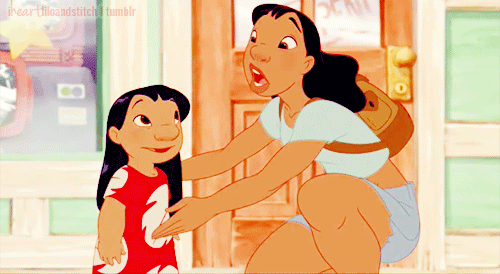
TH2: Anh chàng quên sinh nhật người yêu khiến người yêu tủi thân và buồn trong một thời gian dài.
“Anh xin lỗi. Anh rất tệ, anh là người đàn ông tồi tệ, ích kỉ nhất thế giới và anh không xứng đáng có em. Anh không hiểu sao anh lại có thể quên được... lần sau sẽ không tái phạm... Anh thật tệ...”
Chẳng phải anh ta đang cảm thấy rất hối hận và hứa sẽ không làm thế hay sao? Nhìn lướt qua thì có những người sẽ tưởng lời xin lỗi này chấp nhận được, nhưng thực chất đây là một lời xin lỗi rất dở. Đây được gọi là chiến thuật ăn vạ, cố gắng hạ thấp mình hết sức với mong muốn lấy tình thương của người còn lại, mong sẽ nhận được câu “Ôi anh không tệ đâu, anh đừng nghĩ như vậy, không sao mà.” Chưa kể, đến tận giờ phút này, anh vẫn chưa chúc mừng sinh nhật hay hint tổ chức sinh nhật cho bạn kia!
Lời xin lỗi này không thể hiện được sự trân trọng đối phương, chẳng nhắc đến những giải pháp tốt đẹp mà anh ta có th��� mang đến, mà chỉ tập trung vào những điểm xấu của bản thân. Khi xin lỗi, thấu hiểu mình sai là cần thiết, nhưng nếu chỉ nói về nhược điểm của bản thân (và những thứ xấu) thì sẽ khiến bầu không khí càng tiêu cực, không khiến người kia vui lên. Thậm chí, có khi nó còn gợi cho bạn kia suy nghĩ “Ừ, anh không xứng đáng thật, vậy mình chia tay để em yêu người tốt hơn nhé.” Thế lại toang... không được! Mình đã làm đối phương buồn thì giờ cần khiến tâm trạng người ta tốt lên: xin lỗi đi với hành động mà.
Hơn nữa, nó còn phóng đại một cách trắng trợn. “Anh là người đàn ông tồi tệ nhất thế giới” ư? Anh có biết Hitler là ai không? Nếu nói “anh cảm thấy như người tệ nhất thế giới” hay “làm em buồn là một tội ác” thì nghe còn chấp nhận được, nhưng tự nhận mình (tệ) nhất thế giới? Xin anh, những câu phóng đại ấy chỉ hợp lí khi dùng để bày tỏ niềm vui thôi. Phía sau là cách sửa gợi ý:
(1) Anh xin lỗi vì đã không để ý ngày và rồi quên sinh nhật của em. Anh đã thiếu trách nhiệm và vô tâm, khiến em tủi thân và phải rơi nước mắt. Lúc nào em cũng tỉ mỉ, quan tâm đến anh nhưng đến ngày quan trọng nhất của em anh cũng quên... (2) Anh sai thật rồi, nhưng anh muốn em biết rằng dù anh có làm gì ngu đi chăng nữa thì em vẫn là người tuyệt vời nhất, người đặc biệt nhất với anh và anh không thể diễn tả được rằng anh yêu thương em như thế nào. Em giận anh cũng được, nhưng anh không muốn mất em đâu. (3) Anh đã làm một việc rất tệ, nhưng hãy cho anh một cơ hội để anh cho em xem anh có thể là người tốt như thế nào, nhé? Mai anh có thể đưa em đi ăn tối, rồi dẫn em đến một nơi tất đặc biệt được không?
Tất nhiên, nó không hoàn hảo, nhưng nó tốt hơn cái đầu gấp nghìn lần... Và ngay sau khi gửi gắm xong lời xin lỗi này thì chắc chắn là phải lao đi chuẩn bị sinh nhât rồi, không bị bỏ cũng hợp lý.

Còn có một số kiểu xin lỗi dở tệ khác, như gaslighting, xin lỗi nửa vời, xin lỗi bằng cách “không xin lỗi mà chỉ act như chưa có gì xảy ra” nhưng mình sẽ update dần dần sau.
Ngoài ra, những người xin lỗi chân thành luôn cố gắng thấu hiểu người khác.
Hãy thử tưởng tương xem sai lầm của mình đã khiến người kia cảm thấy như thế nào. Cảm xúc con người rất phức tập. Thứ ta nghĩ chung chung là “cáu” thực chất rất cụ thể... Có thể trong trường hợp này là sự “thất vọng” và cảm giác “bị phản bội” nhưng trong trường hợp khác lại là “không được tôn trọng” và “bất công.” Khi xin lỗi, thay vì xin lỗi cho những điều chung chung, sử dụng những từ ngữ cụ thể sẽ khiến đối phương cảm nhận được rằng mình đang cố thấu hiểu cảm xúc của họ, xem sự việc theo góc nhìn của họ. Trên lớp ta cũng học làm cái này, nhưng nó lại được gọi là “dùng ví dụ cụ thể chứng minh cho luận điểm.” Áp dụng vào đời sống được cả thôi.
Xem sự khác biệt giữa “Chị để em ở đó một mình chắc em buồn lắm đúng không? Chị xin lỗi nhé, lần sau không bỏ em nữa” và “Có phải lúc chị để em ở đó một mình, em cảm thấy cô đơn và tủi thân không? Chắc ở một mình chỗ toàn người lạ như thế sợ lắm nhỉ, có khi run hết cả chân tay... em quả thật rất dũng cảm đấy! Chị xin lỗi nhé, lần sau không bỏ em nữa.” Tuy có thể mình không hiểu được hết cảm xúc đối phương, nhưng sử dụng ngôn ngữ cụ thể giúp các cảm xúc ấy dễ hình dung hơn nhiều. Nó tạo ra sự gắn kết, giúp ta thấu hiểu để từ đó không tiếp tục phạm lỗi.

III. Xin lỗi xong rồi... giờ thì sao?
Thứ nhất, hãy chấp nhận rằng có thể mình sẽ không được tha thứ. Việc xin lỗi là việc của mình, vưà là trách nhiệm cũng như nỗ lực của bản thân mình để sửa sai, hàn gắn mối quan hệ. Nhưng việc có chấp nhận lời chuộc lỗi, sửa sai đó hay không lại hoàn toàn là quyền của đối phương. Dù mình có xin lỗi thiết tha đến mấy, có sẵn lòng làm đủ thứ để giải quyết hậu quả mà đối phương vẫn không muốn tha thứ thì phải chịu thôi. You are not freely entitled to others’ forgiveness and goodwill as you think you are. Just move on and do better.
Thứ hai, trong trường hợp bạn “pass” và được tha thứ, thì hãy nhớ rằng dù bạn được bỏ qua lần này, thì niềm tin của người kia dành cho bạn cũng đã lung lay. Nếu bạn tái phạm lần nữa thì hậu quả sẽ nặng hơn nhiều.
Vậy nên phải tìm cách xây vững lại mối quan hệ ấy, dù là giúp người kia sửa lại những gì bạn đã làm hỏng, đền bù cho họ cái gì đó, hay dành thời gian và quan tâm tới họ nhiều hơn (một cách giải hòa tốt là đồ ăn). Quan trọng nhất là một khi đã hứa không tái phạm, thì phải cố gắng thật nhiều để thay đổi bản thân nhé! Mọi thứ không kết thúc bằng câu xin lỗi đâu!
Vậy thôi, chúc các bạn xin lỗi thành công nhé! ♡
13 notes
·
View notes
Photo


A small sheep wall I made last week with acrylic paints and fluff from a kapok fruit.
5 notes
·
View notes
Text
Dreamlog 1: Người Đàn Bà Uống Cả Đại Dương.

Photo: Victoria Siemer
Tôi có cảm giác con người có khả năng đứng trên ranh giới giữa thế giới thực và thế giới ảo, giữa sự tỉnh táo và mê hoặc, giữa sự rõ nét và mông lung. Cảm giác ấy đến với chúng ta vào hai thời điểm: một là khi ta đang phê, hai là khi ta đang tiến vào giai đoạn cuối của giấc mơ, hoặc vừa ngái ngủ tỉnh dậy. Trong bài viết này tôi nói đến trường hợp thứ hai.
Bạn hiểu tôi đang nhắn đến cảm giác nào, phải không? Đó là khi bạn đang mơ, bạn cảm nhận được diễn biến của nó chạy trong đầu bạn. Nhưng có vẻ ở thế giới thực thì trời đang sáng và cơn ngái ngủ của bạn đang dần vơi đi. Bạn cảm nhận được những tiếng động của thực tế đang len lỏi vào trong giấc mơ, như tiếng chân đi lại, hay tiếng nói lào xào đâu đó ở phòng bên. Tự nhiên, bạn ý thức được mình đang ở trong giấc mơ nhưng vẫn bỏ ngoài tai những tiếng động, cố gắng mơ tiếp.
Có lẽ đó là một giấc mơ rất hay. Tôi đã từng mơ mình đi thám hiểm với năng lực của một siêu anh hùng, và khi đối diện với thực tại làm một người bình thường với một chồng bát từ đêm hôm trước chưa rửa, đương nhiên tôi sẽ chọn làm siêu anh hùng, dù chỉ cố được thêm một chút. Đã không ít lần tôi tỉnh dậy sau một giấc mơ, rồi hết sức bối rối cố quay lại thế giới của giấc mơ đó. Tuy vậy, cảm giác đứng ở ranh giới cái thực và cái ảo là một cảm giác hết sức khó tả.
Tôi “tỉnh” dậy giữa tiếng nước. Trong giấc mơ của tôi, trời đang tối và tôi nằm trên một bãi biển với những làn sóng nhẹ tạt vào bờ. Trên thực tế, tôi đang nằm trên tầng 2 của một cái giường tầng và ngoài trời đang đổ một cơn mưa to khủng khiếp. Đó là một trận mưa rầm rộn, ào ạt mang cái lạnh ngắt của mùa đông. Mưa đổ xuống nhanh và mạnh đến mức tôi còn không rõ đó có phải là mưa hay không, hay là tiếng nhiễu của đài không có sóng, hay là một tràng vỗ tay cho một nghệ sĩ nào đó. Ai đã biểu diễn mà được vỗ tay ào ào như thế? Lang Lang ư? Hay là Mozart nổi lên từ mộ của ông ta và đánh đàn lại? Nhưng thế có khi người ta lại sợ, bắn súng “bằng bằng” chứ không phải vỗ tay “ào ào.”
Tiếng nước vọng lại từ xa. Tôi tưởng tượng ra được sự lớn mạnh của nước, nhưng chỉ nghe được nó ở một âm thanh bé tẹo khiến tôi cảm thấy nhỏ bé và xa cách vô cùng, như một hạt bụi giữa cơn bão, có thể tan vào gió bất cứ lúc nào. Nếu đây là một bộ phim, ở cảnh này camera sẽ zoom dần dần ra khỏi mặt tôi, đến khi thấy cả người tôi, rồi zoom ra nữa đến khi tôi chỉ còn là cái chấm tí hon, rồi đến khi chẳng thấy tôi nữa và cái flycam đạt đến giới hạn độ cao.
Nhưng thật ra tôi đâu có một mình. Ở tầng dưới, bà và em gái tôi đang ngáy ò ò. Bà cũng hiên hữu trong giấc mơ của tôi, cũng ngồi trên bãi biển ấy tuy không gần tôi. Bà ngồi ngay cạnh mặt nước cùng một người con dâu (người tôi lẽ ra gọi là “mợ” nhưng tôi đã gọi bằng “cô” mấy năm nay vì tôi có ác cảm với từ “mợ”). Màn đêm yên ắng, chỉ có sự chuyển dịch của sóng và ánh sáng của một vầng trăng khổng lồ đến bất thường dọi xuống.
Bỗng cô của tôi nói:
“Mẹ ơi, con khát nước quá.”
Và rồi bà của tôi đáp:
“Vậy để mẹ lấy nước cho con uống.”
Và như một ảo thuật gia, bà rút từ trong không khí ra một chiếc cốc và múc nước từ ngay cạnh cho cô tôi uống.
Ực ực ực...
Cô tôi đang uống nước mặt trăng, nước của cái ánh sáng kỳ diệu đang rọi lên thiên hạ. Cô đang uống nước của biển, trôi đến từ một nơi chẳng ai biết.
Ực ực...
Khéo khi cô đang uống nước trôi từ bờ bên kia trái đất sang nhỉ? Dòng nước ấy sẽ mang những câu chuyện và tấm lòng của các mảnh đời cô chưa từng gặp mặt. Không biết khi cô uống nước, cô có cảm nhận được nỗi buồn đau, niềm hạnh phúc của họ không nhỉ?
Mà sao cô uống lâu thế! Uống mãi chẳng hết!
Cô nâng cái cốc lên. Miệng của cái cốc hình tròn, khớp với mặt trăng, còn làn nước chéo nghiêng bấp bênh theo nhịp thở của cô thì khớp với biển. Đến một lúc tôi nhận ra cô không còn uống từ cái cốc nữa mà đang uống chính biển! Nhưng nước biển là nước mặn, càng uống càng khát. Và vì là nước biển nên có bao giờ hết đâu? Vậy nên cô chẳng dừng, cô cứ uống, uống mãi...
Và trong thực tế, cô càng uống, tôi lại càng khát. Không biết là do tôi lỡ hà mồm và nước bọt đã bay hơi hết mất tiêu, hay do tôi phải chịu ảnh hưởng từ những hành động của cô vì cô chỉ là một phần của trí tưởng tượng của tôi nữa. Khi tỉnh dậy mồm tôi đang khô cong (còn chẳng nuốt được nước bọt.) Tỉnh dậy, rồi dần chuyển từ sự bao trùm của tiếng sóng sang tiếng mưa. Tôi nằm tê liệt một hồi rồi cũng bò ra phòng khách lấy nước. Nược... tôi cần nước... Tôi rót và uống. Với mỗi ngụm nước mát lạnh, dường như sự sống được rót lại vào người tôi. Trong lúc ấy, có lẽ tôi cũng như cô, cảm thấy có thể uống được cả đại dương, nhưng tôi thì biết điều hơn giấc mơ một chút và đến cốc thứ 3, tôi dừng. Tôi có cảm giác như cốc nước ấy là vé của tôi từ thế giới ảo sang thế giới thực, và giờ đã đến nơi là thôi.
Rồi tôi ra cửa sổ ngắm mưa. Mở cửa ra tiếng càng lớn, và tôi nhận ra ngay lập tức tôi chẳng tách biệt, xa lánh với tiếng dào dạt ấy. Nó ngay cạnh tôi. Thậm chí, chỉ cần đứng sang bên phải 3 mét thôi là tôi cũng ướt như con chuột chũi chứ lại...
Tôi nghe Sigmund Freud nói rằng những giấc mơ là sự thỏa mãn (ngụy trang) của những ước muốn dã bị truất bỏ, dồn nén (“The dream is the (disguised) fulfillment of a (suppressed, repressed) wish.”) Vậy thì cái giấc mơ củ chuối kia đại diện cho mong muốn vô thức gì cơ chứ? Chẳng nhẽ là mong muốn uống nước? Nó đang dí súng vào đầu tôi, thì thầm bằng giọng nói đe dọa là “Stay hydrated or else...” hay gì? Hay là mong muốn được hòa tan vào cuộc sống, vào một cái gì to lớn? Sự chênh lệch giữa muốn làm một “ai đó” (somebody) có thể tác động đến người khác, với muốn làm “không ai cả” (nobody) có thể hòa vào mây gió, xuất hiện và biến mất bất cứ lúc nào lớn lắm nhỉ. Tôi muốn cả hai thì sao? Tôi cũng chưa biết nữa. Mà tôi cũng có đọc Freud đếch đâu? Chỉ nghe qua một cậu bạn đang viết luận văn về ông ta và những giấc mơ, đã nói chuyện với tôi vì nghe bảo tôi hay mơ lạ, lung tung. Tôi cũng đinh tải quyển “The Interpretation Of Dreams” đọc vì bìa có con chim rất xinh, nhưng đang có một chồng sách chưa đọc hết đang đợi đây này.
Thế rồi tôi vào phòng ngủ tiếp.
04/02/2020.
0 notes
Text
January Reading Updates
Since we’ve just reached the end of the first month of 2020, I thought I’d take some time to share with you all what I’ve been reading and also write a short review about each book (else I’ll completely forget what I read by the end of the year...) The books are listed in the order that I completed them in.
(*): Read in Vietnamese
1. American Gods - Neil Gaiman
Neil is perhaps my favorite storyteller ever, and he particularly excels in building strange yet captivating worlds that do a great job of making humans seem more human than ever, despite the fact nothing remotely conforming to the human-norm happens (except marriage problems--I suppose even gods and demi-gods are dumb motherfuckers when it comes to love.)
American Gods follows Shadow, a widower freshly released from jail as he tags alongside a suspiciously rich “Mr. Wednesday” (later revealed to be an undercover God), on a quest to convince the old, forgotten Gods of America to rise up and fight the new Gods (Technology, Media etc.) The book pulls up many characters from Irish, Norse, Hindu, Slavic, African and Egyptian folklore and so on, and offers a very refreshing take on religion in modern society. Although Gaiman didn’t dive deep into any specific culture, it’s a helpful start to continue learning about religion and folklore all over the world. There is a lot of information and I can only imagine how painstaking the research process must have been.

Genre-wise, I don’t think this book fits into any at all. There’s history, fantasy, horror, maybe some thriller too. The idea of a giant war with hundreds of Gods is very ambitious, so the book does get a little messy and all-over-the-place at times. I’d call it “jigsaw-puzzling”, though, you’re given lots of information that doesn’t seem to make sense, but gradually everything comes together at the end and I absolutely love getting to the end and exclaiming “OH! So THAT’S what it was about” I find that the suspense-building in this book very well-done, too. The only criticism I have is that the ending felt a bit... lacking. You had all this build up, this gigantic feud, but everything’s resolved so simply you almost feel cheated. Or maybe I just have something against how Armageddon-type stories (where 2 sides fight to death) keep ending. Other than that, considering how hard this topic is to write about, I’m flabbergasted at how well Neil pulled it off.
Overall rating: 8/10
2. The Subtle Art of Not Giving a F*ck - Mark Manson
Everyone was raving about it so I had to give it a go. For those of you who don’t know, this is a self-help book aiming to show you how to re-purpose your life, communicate effectively and live productively. Surprisingly, it only took me 2 afternoons to finish (I always find self-help books are easier to read than fiction, don’t know why). It’s written very informally and feels more like a humorous conversation with a loving but foul-mouthed friend, which makes it easy to digest whether you’re a 10th grader being peer-pressured to apply to US Colleges or a 53-year old electrician just realising you actually wanted to be a novelist. The only requirement for the the advice to be useful is that you kind of need to mess up a lot.
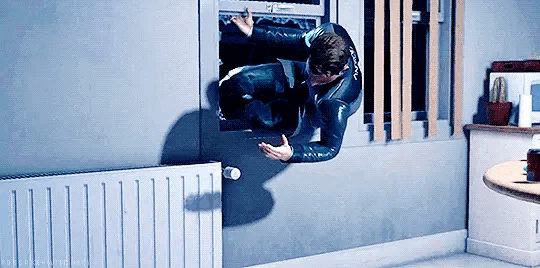
However, I found that there weren’t that many new things in the book. Mostly, it just reminded us of the things we already knew but consciously (or subconsciously) decide to shove under the carpet, OR put into words things we kind of already think, but don’t know how to explain. There is, no doubt, lots of helpful advice but like all self-help books, I find it too much to remember (unless you’re going to re-read it 20 times), and when I finished, out of the dozens of pieces of advice I only remembered one, “People who make changes aren’t flashy and don’t about what they’re going to do a lot. They just do it.” And from then on I shut up about my plans and just worked on them. Everyone’s going to have their own takeaways relevant to their lives, and I’d encourage you to read it just to see if you can find anything interesting. If out of 20 things, you remember 2-3 things that work for you, that’s still a win.
What I enjoyed the most was actually reading the stories/examples of real people at the beginning of each chapter before getting into the “lecture” part.
Overall rating: 6.9/10
3. Dracula - Bram Stoker
A classic in gothic horror. I actually started reading this last year and the first third of the book telling Jonathan’s fearful stays at Count Dracula’s castle had me hooked - it’s written in beautiful, elegant language which we hardly ever hear anymore, and does such a wonderful job conveying the characters’ fears, thoughts and emotions. But the moment Jonathan leaves the castle and the book switches to other characters’ stories, it just got so long and boring that I stopped reading for 3 months altogether and forgot which character was which because there were so many men. The “dull chapters” stretch on for at least a quarter of the book, and things only get interesting again when Dracula returns to the story and certain characters start turning into vampires. The rest of the story follows the “heroes” as they try to defeat the Count and bring peace to his victims, and although many parts are suspenseful and very clever, the ending is also so easily achieved that it’s a bit of a downer.

The whole book is written in diary entrees, journal entrees and letters of different characters (I’ve only read single-person diaries before) which was surprisingly pleasant in that you feel like you know the characters and by the end, you grow quite fond of them. It even inspired me to start keeping a diary again. It also made me start speaking like an old Englishman for the few days after completion, because I hadn’t really shaken off the language yet. Everyone seemed to be much more caring towards each other in those days, and through the letters I picked up some romantic phrases of which my favorite has been “And so, as you love me, and he loves me, and I love you with all the moods and tenses of the verb, I send you simply his ‘love’ instead.” Lovely, isn’t it?
Overall rating: 7/10
4. Days at Morisaki Bookstore / Những Giấc Mơ Ở Hiệu Sách Morisaki - Satoshi Yagisawa*
I’m not sure of the popularity of this book, it seems quite lowkey but has a surprising amount of reviews on Good Reads and even has a film adaptation. I happened to find it on my bookshelf and finished it in one afternoon (it was only 150-ish pages.)
Genre-wise, I’d call it Slice of Life although I don’t know if books are even allowed to be called that, or just anime. There is generally no real plot, only character development as Takako (main character) gets dumped by her cheating boyfriend and moves into her uncle’s antique bookstore to re-charge, gradually finding herself learning to appreciate books and the people around her. It’s a very simple storyline, and there’s almost nothing very special about the main character, but maybe that’s what makes it a relaxing read - because in reality, most humans aren’t the special snowflakes and oddballs we think. Admittedly, I started off finding Takako very annoying, but as she grew through the story, I found myself empathizing with her. For me, the book is a reminder to take things slower in life, remember to recharge and learn to see the beauty in simple things around you. It had a happy ending, too. Good for lazy reads, you don’t really have to think much - just sit there with a nice cup of tea and go with the flow.
Overall rating: 7/10
5. The Oldest Parents With The Youngest Child / Những Tháng Năm Rực Rỡ - Ae-ran Kim*
I. Loved. This. Even now it’s left me with a tumble of emotions that I don’t even know how to describe, and I can say for sure that it’s made it to my list of favorite books of all time.
The story recounts the life of a 17-year-old boy with progeria (a disease that makes his body age 4x as fast as a regular person, meaning he has the body of an 80-year-old) and his parents, who had him when they were 17. It talks of the struggles of teen parents learning to cope with an unintended pregnancy, their financial and mental hardships raising a child whilst also battling his illness, and also of the main character’s steel-hard resilience and love for life despite his condition. It actually made me feel ashamed of myself for being perfectly healthy, but not being as curious and hungry to learn, and most of all, to have a perfectly functioning laptop and not be writing. Other than that, it also humanizes persons with disabilities, showing that they too can fall in love, get anxious when ghosted and want to sneakily drink alcohol despite being underaged - anything a typical 17 year old might do. After this book, for the first time in a long time I felt that every aspect of life was truly wonderful and that I was lucky to be here. I also made a list of 30 challenges to do these coming months, to understand and enjoy life more and will keep you updated on my progress.

Even though the book is written from the perspective of a boy with progeria, the author herself is a perfectly healthy woman in her 40s (who did a lot of research before writing, I’m sure). Yet somehow she’s able to tell the story so vividly, convincingly and emotionally that I feel like I’m in his body, living his life and feeling his disappointment and excitement. The tone is so natural, so nonchalant it just feels like a leaf smoothly riding the breeze down the the ground. Reading this book, I’m reminded again of how powerful a tool literature is in sharing ideas, bridging humans and building empathy. I’m in awe of not just the main character for pushing through his difficulties the way he did, but also of the author for writing something so powerful it changed the way I looked at life. It makes me want to write stories like this one day, too. I just don’t know what to say about this book other than I really loved it.
Overall rating: 9/10
And that’s it for this month! I’ve only just gotten back on track with reading and remembering how fun it is. Hopefully someone will find this helpful and maybe pick up one of these books. I’ll see you guys next month!
#book review#american gods#the subtle art of not giving a f*ck#dracula#my brilliant life#kim aeran#days at morisaki bookstore#reading list#eng#books
5 notes
·
View notes
Photo

3 small Kenmas, side by side.
25 notes
·
View notes
Photo

Sleepy Akaashi
#my art#art#digital art#akaashi keiji#haikyuu#haikyuu!!#haikyuu akaashi#fukurodani#illustration#boy#sleeping
15 notes
·
View notes
Photo


Hanoi Amsterdam Rock Club 2018 - Recruitment Results Illustration
#my art#art#illustration#doodle#creepy#black and white#hanoi amsterdam#catsofig#skeletons#halloween#pumpkin
2 notes
·
View notes
Photo
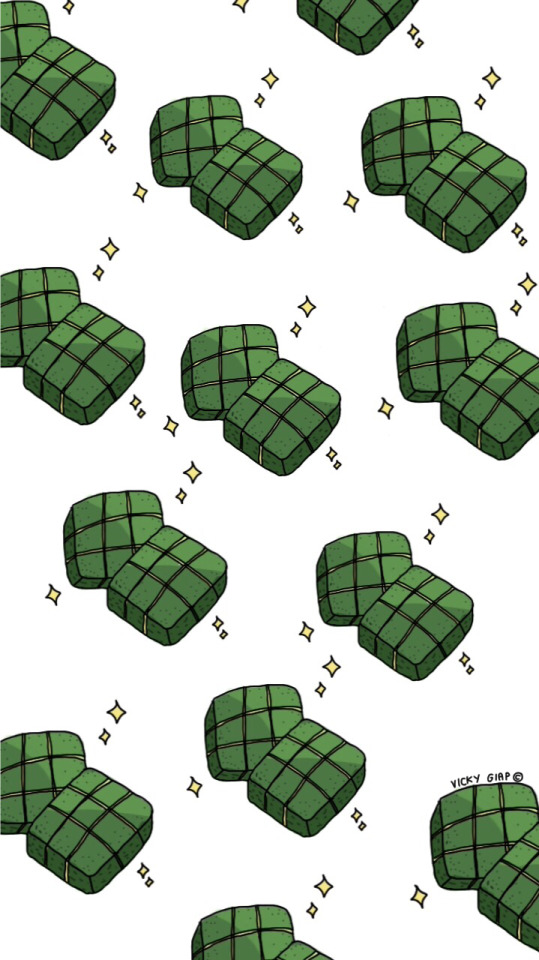



I found some old lucky money packet designs I made in 2017 - Year of the Chicken. The 3 designs at the top feature chickens and banh chung (traditional Vietnamese glutinous rice cake wrapped in banana leaf, popular during Lunar New Year).
2 notes
·
View notes
Photo


Lion Dance / Harvesting Tea - Gouache on Paper (15x25cm)
#my art#art#painting#gouac#tea leaves#tea#lunar new year#lion dance#peach blossom#banh chung#illustration#vietnam
3 notes
·
View notes
Photo

Hanoi Amsterdam’s Menu for Class of 2019 Yearbook - “FM. 1618″.
#my art#illustration#digital art#digital drawing#map#treasure map#menu#food#food doodle#hanoi amsterdam
1 note
·
View note
Photo


Created for Hanoi Amsterdam’s Class of 2019 Yearbook - “FM. 1619.″
#my art#art#illustration#digital art#school#high school#teacher#radio#colors#green#blue#brown#hanoi amsterdam#made in 12
2 notes
·
View notes
